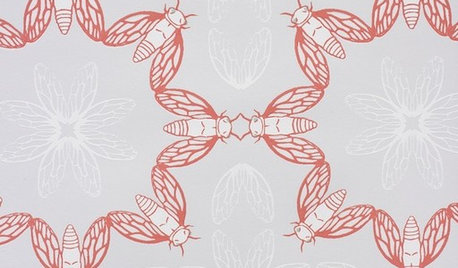ID this bug please? [pic]
prairiemoon2 z6b MA
13 years ago
Related Stories

SUMMER GARDENINGHouzz Call: Please Show Us Your Summer Garden!
Share pictures of your home and yard this summer — we’d love to feature them in an upcoming story
Full Story
GARDENING AND LANDSCAPINGPorch Life: Banish the Bugs
Don't let insects be the bane of your sweet tea and swing time. These screening and product ideas will help keep bugs at bay on the porch
Full Story
GARDENING AND LANDSCAPINGBreezy and Bug-Free Modern Porches
Screening keeps pests out of these diverse porches across the U.S., while thoughtful designs keep them visually appealing
Full Story
GARDENING AND LANDSCAPINGBid Bad Garden Bugs Goodbye and Usher In the Good
Give ants their marching orders and send mosquitoes moseying, while creating a garden that draws pollinators and helpful eaters
Full Story
EARTH DAYHow to Help Your Town’s Beneficial Birds and Bugs
Make a habitat using local materials to provide a home to the creatures that help our gardens
Full Story
PRODUCT PICKSGuest Picks: Decor to Make Your Eyes Bug Out
Insects are marching to a different tune these days, showing up on knobs, teapots and even tablecloths
Full Story
GARDENING GUIDESGreat Design Plant: Silphium Perfoliatum Pleases Wildlife
Cup plant provides structure, cover, food and water to help attract and sustain wildlife in the eastern North American garden
Full Story
MOST POPULARA Fine Mess: How to Have a Clean-Enough Home Over Summer Break
Don't have an 'I'd rather be cleaning' bumper sticker? To keep your home bearably tidy when the kids are around more, try these strategies
Full Story
EXTERIORSCurb Appeal Feeling a Little Off? Some Questions to Consider
Color, scale, proportion, trim ... 14 things to think about if your exterior is bugging you
Full StoryMore Discussions











prairiemoon2 z6b MAOriginal Author
jean001
Related Professionals
Richmond Heights Landscape Architects & Landscape Designers · Hartford Landscape Contractors · Bergenfield Landscape Contractors · Bethel Park Landscape Contractors · Fairfield Landscape Contractors · Fountain Valley Landscape Contractors · Gloucester Landscape Contractors · Hoover Landscape Contractors · Pikesville Landscape Contractors · Suitland Landscape Contractors · Wells Landscape Contractors · West Palm Beach Landscape Contractors · Markham Landscape Contractors · Greenfield Landscape Contractors · Bull Run Specialty Contractorsprairiemoon2 z6b MAOriginal Author
rhizo_1 (North AL) zone 7
taz6122
prairiemoon2 z6b MAOriginal Author
jean001
prairiemoon2 z6b MAOriginal Author
rhizo_1 (North AL) zone 7
prairiemoon2 z6b MAOriginal Author